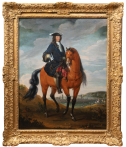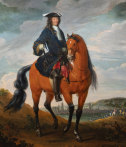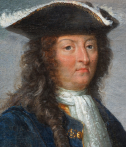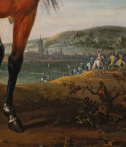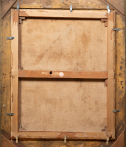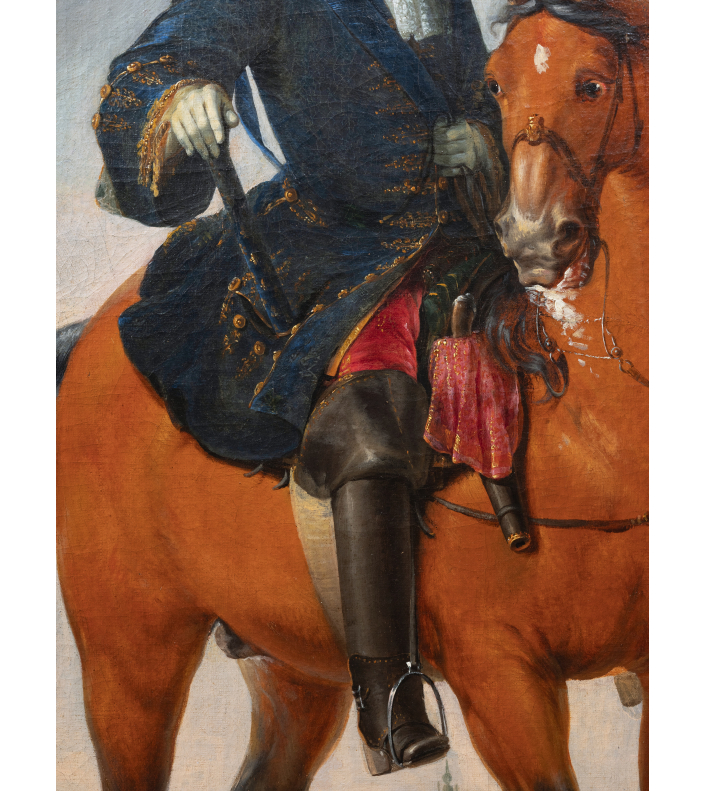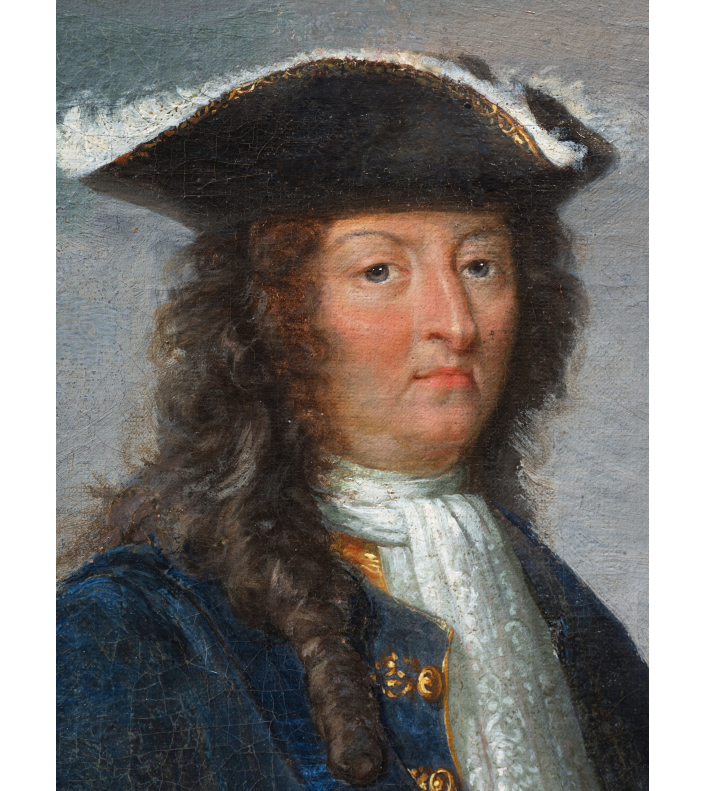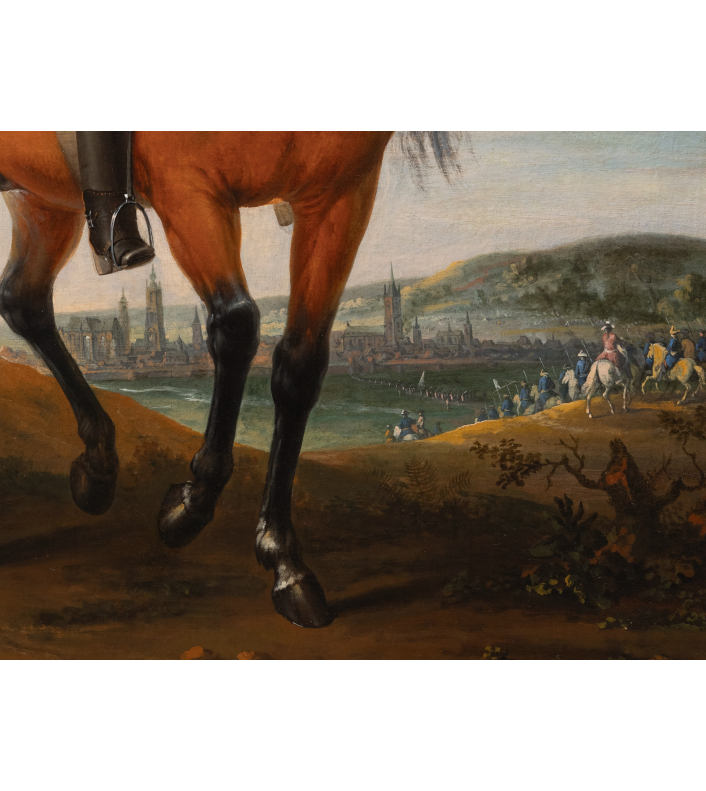Equestrian portrait of Louis XIV before Mons
By Charles Chastelain (Paris, 1672-1755)
Signed « chastellain » at the bottom
Oil on canvas: h. 99 cm, w. 78 cm
Important Louis XIV giltwood and richly carved frame
Framed: h. 125 cm, w. 104 cm
Keen to project the image of the warrior king, Louis XIV commissioned numerous equestrian portraits throughout his military campaigns.
Adhering to the conventions of warlike iconography, our portrait depicts the monarch as an accomplished horseman before the besieged city of Mons.
Simply dressed in court attire—a blue velvet doublet embroidered with gold, a white lace cravat, a black hat with a white plume, and modest black boots—his outfit bears no royal insignia. The sole accessory of his status, his fleur-de-lis-adorned baton of command, rests in his right hand against his thigh.
Mounted on a palomino horse atop a mound overlooking the valley, his solemn bearing, haughty posture, and proud expression are enough to convey the sovereign's power to the viewer. This dignity, coupled with apparent calm, only accentuates his supremacy as the victor, a supremacy he wields not only over the conquered city but, he hopes, over all of Europe.
This new approach to iconographic choice abandons the ostentatious style found in the works of Pierre Mignard, such as the rearing horse, the winged victory crowning the monarch, and the antique-style "Roman" clothing, or in those of René-Antoine Houasse: the rearing white horse and sumptuous garments.
No longer feeling the need to establish Louis XIV's power through mythological or allegorical elements, the artist opts for a sober composition, undoubtedly reflecting the king's maturity. This concise method renders this equestrian portrait all the more solemn and prestigious.
By depicting the monarch on horseback during one of the military campaigns, our portrait is part of a long series of works initiated by Adam Frans van der Meulen and continued by Jean Baptiste Martin to exalt the military exploits of Louis XIV and his army.
The Siege of Mons, a major operation in the War of the League of Augsburg, took place from March 15 to April 10, 1691. It pitted the King of France against a large European coalition, including the Anglo-Dutch King William III, the Holy Roman Emperor Leopold I, the King of Spain Charles II, and Victor Amadeus II of Savoy. The war began with resounding French victories, including the capture of Mons on April 9, 1691. The armies of William III of Orange-Nassau were defeated by Louis XIV, who personally attended the siege while the troops were commanded by Marshal Luxembourg.
Charles Chastelain (Paris, 1672-1755) was a painter to the king and inspector of the Gobelins Manufactory (1720-1755) during its time under the direction of Jean-Baptiste Martin, known as Martin des Batailles (1659-1735).
He was admitted to the Académie des Beaux-Arts in 1740 as a landscape painter. His body of work remains relatively unstudied.
The two known paintings by his hand are held at the Palace of Versailles (View of the Chestnut Tree Garden, 1713, inv. MV756 and Promenade of Louis XIV at the Grand Trianon, 1713, inv. MV761).
We can assume that Charles Chastelain likely worked in the studio of Adam Frans Van der Meulen, where he may have met Jean-Baptiste Martin. It may have been the latter who introduced him to the court and procured royal commissions for him before giving him the position of inspector of the Gobelins factory in 1720.


